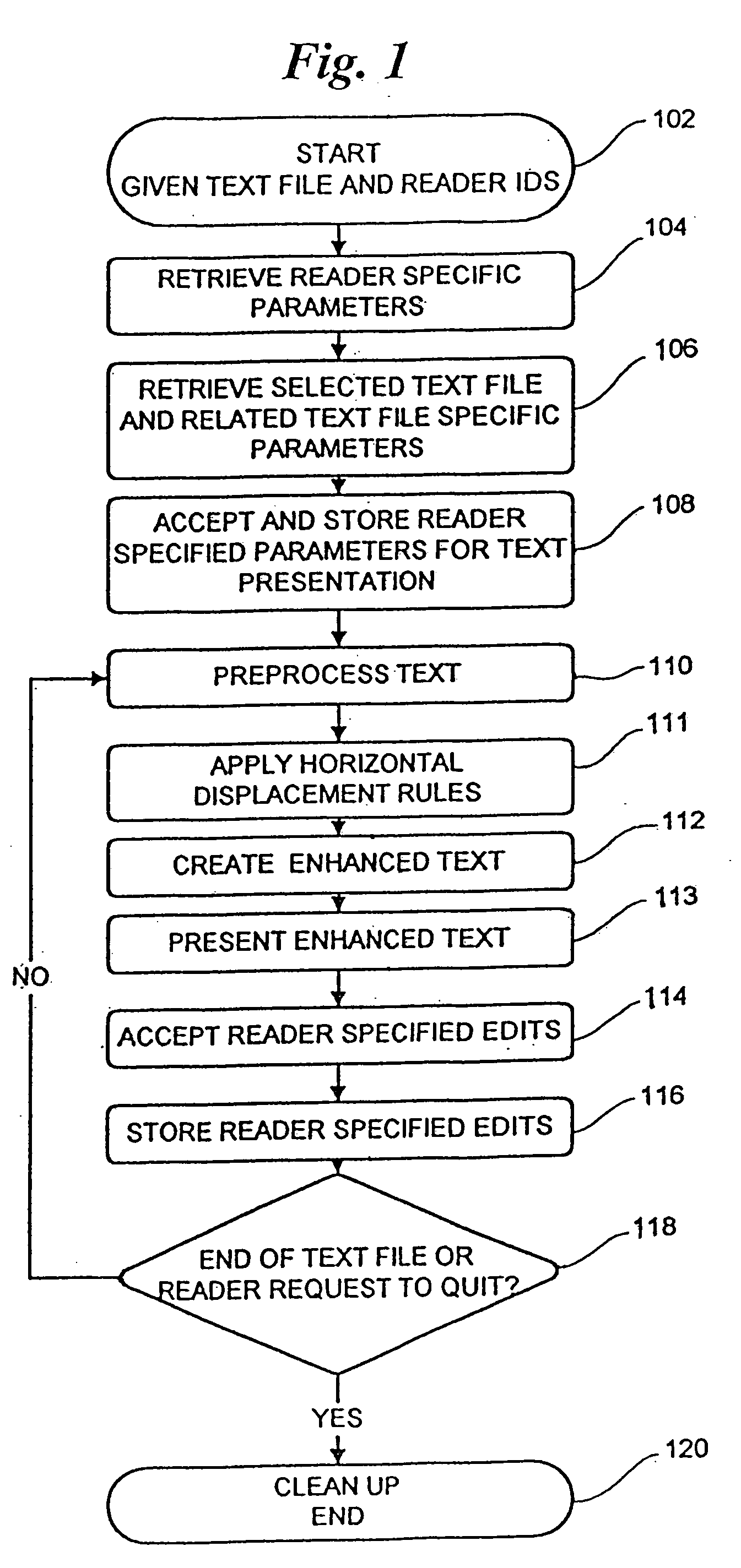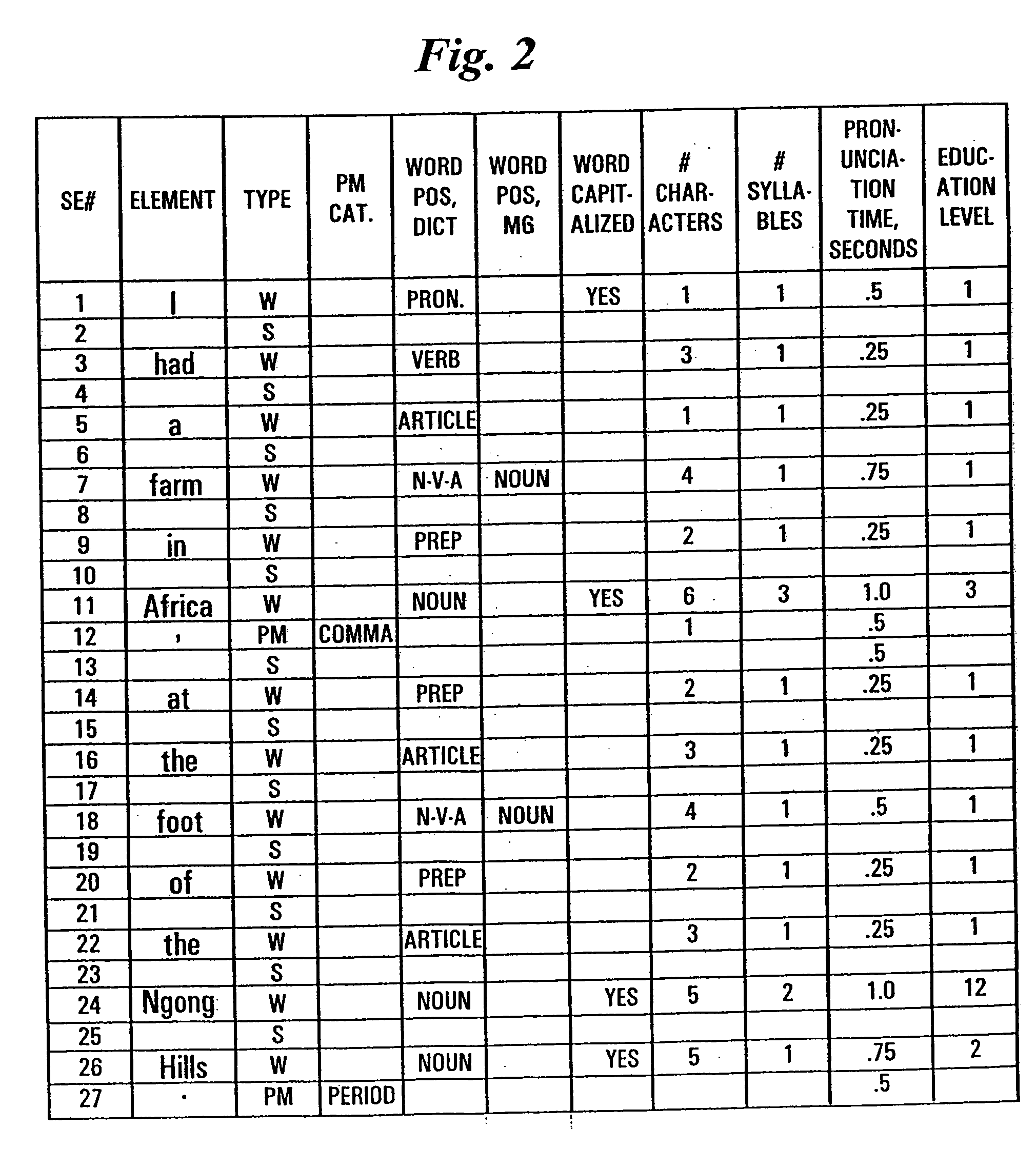Reading product fabrication methodology
a technology of product fabrication and computer technology, applied in the field of computer assisted text presentation, can solve the problems of unfriendly computer text presentation, inability to utilize a large amount of human brain, and inability to enhance the reading experience, so as to improve the human reading experience and improve the effect of human reading
- Summary
- Abstract
- Description
- Claims
- Application Information
AI Technical Summary
Benefits of technology
Problems solved by technology
Method used
Image
Examples
example method
Overview of Example Method
[0118] The present invention includes a method for text folding and displacement that applicant believes is an improvement over the method previously described under the heading “method” above.
[0119] One embodiment of the present invention classifies punctuation marks as either “serial” or “bracketing.” Serial punctuation marks include colon, semi-colon, comma, a single double dash (“- -”), and the ellipse. Bracketing or nesting punctuation marks include quotation marks, parenthetical marks, brackets (as in [and ]), and a pair of double dashes. The present invention works best when bracketed segments do not start inside of one bracketed segment and end within another. This is normally the case.
[0120] Segments within bracketing punctuation marks can be serially divided with serial punctuation marks, be further bracketed with inner bracketing punctuation marks, or both. There is one case where two commas in a segment produce a kind of bracketing: the middle...
PUM
 Login to View More
Login to View More Abstract
Description
Claims
Application Information
 Login to View More
Login to View More - R&D
- Intellectual Property
- Life Sciences
- Materials
- Tech Scout
- Unparalleled Data Quality
- Higher Quality Content
- 60% Fewer Hallucinations
Browse by: Latest US Patents, China's latest patents, Technical Efficacy Thesaurus, Application Domain, Technology Topic, Popular Technical Reports.
© 2025 PatSnap. All rights reserved.Legal|Privacy policy|Modern Slavery Act Transparency Statement|Sitemap|About US| Contact US: help@patsnap.com



